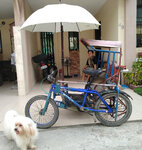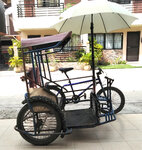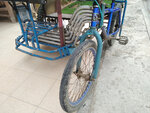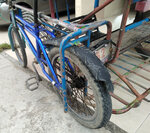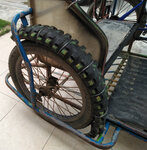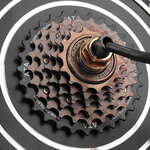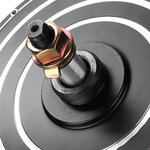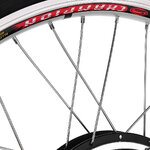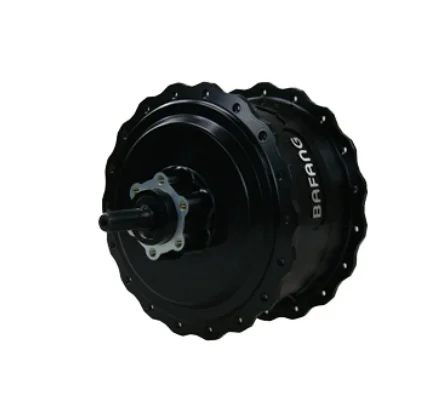This is the first post of probably many more in this thread on my planned conversion.
A Philippines pedicab consists of a heavy-duty 20" diameter wheel direct drive bicycle with an unsprung sidecar seating up to three passengers plus a bit of luggage. Fully loaded all-up mass is about 250kg.
This project is to fit an electric drive hub to the sidecar 20" diameter wheel to convert the pedicab to electric drive with peddle assist.
I have laid my hand on a 26" diameter rear wheel with 1000W X 48V direct drive hub and all the associated gear, except for the batteries for about USD250 (budget is limited). I should have this rear wheel assembly within a couple of weeks. Before then, I'll post some photos and details of the pedicab.
Should be an interesting project. I hope some of the members here can later give me some guidance and advice.
A Philippines pedicab consists of a heavy-duty 20" diameter wheel direct drive bicycle with an unsprung sidecar seating up to three passengers plus a bit of luggage. Fully loaded all-up mass is about 250kg.
This project is to fit an electric drive hub to the sidecar 20" diameter wheel to convert the pedicab to electric drive with peddle assist.
I have laid my hand on a 26" diameter rear wheel with 1000W X 48V direct drive hub and all the associated gear, except for the batteries for about USD250 (budget is limited). I should have this rear wheel assembly within a couple of weeks. Before then, I'll post some photos and details of the pedicab.
Should be an interesting project. I hope some of the members here can later give me some guidance and advice.
Last edited:
